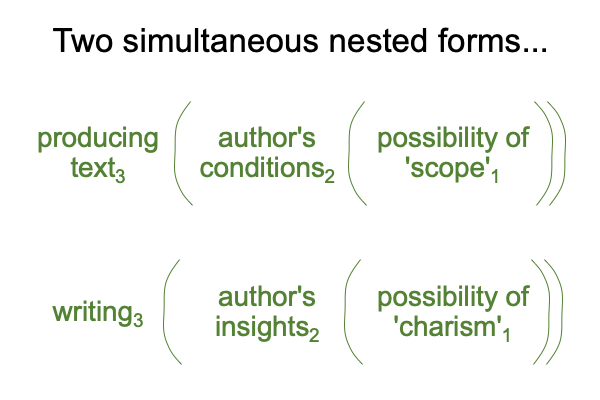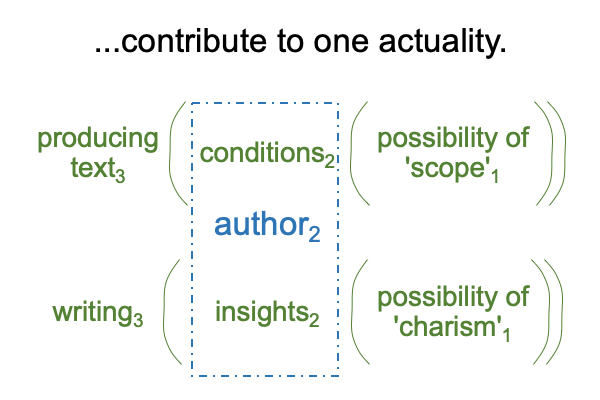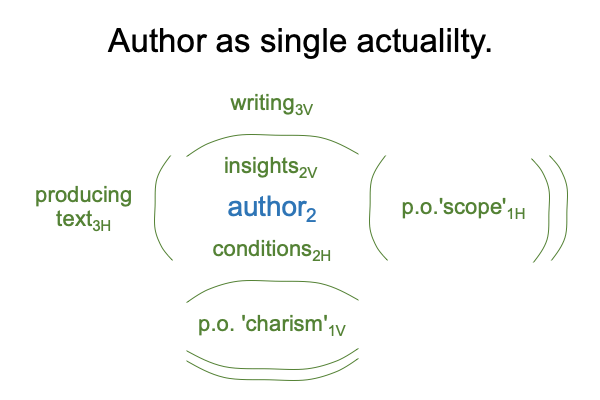0004 Two key words pop out in the introduction, “scope” and “retrospect”. Both apply to reading and writing.
First, consider the author. The author has a gift, a charism. Insights are framed by “his” scope, the cultural impress of the time. But, the cultural impress does not determine the author’s words. The author does. The author has “his” own concerns, which somehow intersect with scope. The author’s insights arise from “his” own interpretations and experiences.
0005 I can write two formulaic descriptions of the author, following A Primer on the Category-Based Nested Form(available at the smashwords website as well as other purveyors of e-works).
One, the normal context of producing text3 brings the actuality of the author’s personal conditions2 into relation with possibilities inherent in the cultural milieu of the author1, including “his” scope.
Two, the normal context of writing3 brings insights2 into relation with the potential of the author’s point of view1, containing “his” charism.

0006 Do these nested forms interscope?
Some say that an author emerges from the civilizational conditions. Others say that an author conveys insights. Clearly, one nested from does not fully situate the other.
They do not interscope.
0007 Instead, they intersect. The author is the single actuality that fuses the actualities of conditions2 and insight2.

0008 Ah, the author2 is a single actuality that is the intersection of two actualities, conditions2H and insight2V. One nested form defines the horizon. One nested form transects the horizon. Clearly, the intersection celebrates, rather than resolves, contradictions inherent to the author2.
Here is a picture of the intersection.

